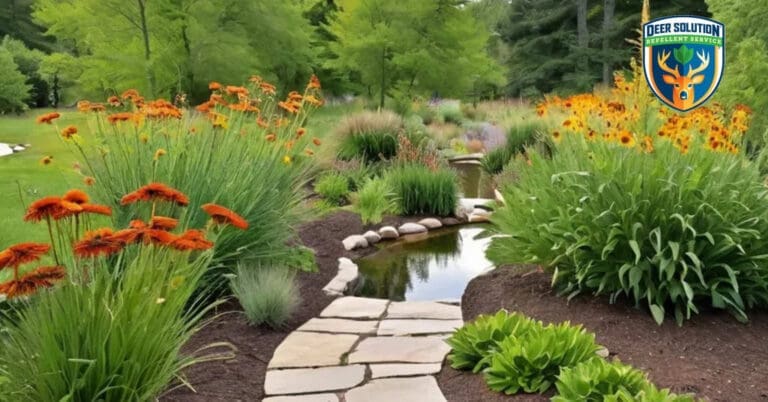When planning a garden, one common concern is whether deer will feast on your carefully chosen plants. A frequently asked question is, do deer eat Heleniums? Understanding deer behavior and their dietary preferences can help you create a more deer-resistant garden. By gaining insight into what deer prefer to eat and what they tend to avoid, you can make informed decisions about which plants to include in your garden to minimize the risk of deer damage.
Understanding Why Heleniums Might Be Deer-Resistant
Deer are known for their varied diet, which includes a wide range of plants. However, they tend to avoid certain plants due to their taste, texture, or scent. Heleniums, also known as sneezeweed, are often considered less palatable to deer for several reasons:
- Bitter Taste: The bitter compounds in Heleniums can deter deer from munching on them. These compounds are often a natural defense mechanism that plants use to protect themselves from herbivores.
- Strong Aroma: The strong scent of Heleniums may be off-putting to deer, making them less likely to include these plants in their diet. The aroma can act as a natural repellent, signaling to deer that the plant is not a desirable food source.
- Coarse Texture: The coarse texture of Helenium leaves and stems can be unappealing to deer, who often prefer tender, smooth foliage. The rough texture can make it difficult for deer to chew and digest the plant, further discouraging them from eating it.
Compared to other deer-resistant perennials like Echinacea or Black-Eyed Susan, Heleniums offer the added benefit of vibrant late-season blooms that continue to attract pollinators when other flowers are fading. This makes them a valuable addition to a garden focused on both beauty and biodiversity.
Incorporating Heleniums into a Deer-Resistant Garden
Heleniums can play a significant role in enhancing the aesthetic appeal and deer resistance of your garden. Here are some practical tips for integrating these plants into your landscape:
- Planting Tips: Heleniums thrive in well-drained soil and prefer full sun to partial shade. When planting Heleniums, space them about 18 to 24 inches apart to encourage healthy growth and air circulation. This spacing helps the plants form robust clumps that can be less accessible to deer.
- Companion Planting: To create a more effective garden design, consider planting Heleniums alongside other deer-resistant species such as yarrow, catmint, and Echinacea. These plants not only enhance the visual diversity of your garden but also contribute to a multi-layered approach that makes it more difficult for deer to target specific plants.
- Layered Planting Design: Incorporating Heleniums into a layered planting design can enhance their role in the garden. Use these mid-height perennials as part of a tiered arrangement, with shorter ground covers and taller shrubs or trees. This layered approach adds depth and texture to your garden while supporting overall garden health by promoting diversity and resilience.
Maintaining a Healthy, Deer-Resistant Landscape
To maximize the health and resilience of your garden, it’s essential to maintain overall plant vitality. Here are some tips for keeping your landscape vibrant and less appealing to deer:
- Regular Care: Ensure that your Heleniums, along with other garden plants, receive proper watering, especially during dry spells. Mulching around the base of the plants can help retain moisture, suppress weeds, and protect the roots, contributing to overall plant health.
- Monitoring for Deer Activity: Regularly check your garden for signs of deer presence, such as tracks or browsing damage. Early detection of deer activity allows you to take timely action to protect your plants and adjust your garden management strategies as needed.
Enhancing Biodiversity with Heleniums
Heleniums do more than just resist deer—they also play a crucial role in supporting garden biodiversity. These plants are known for attracting a variety of pollinators, including bees and butterflies, particularly in late summer and fall when many other flowers have finished blooming. By providing a food source for these pollinators, Heleniums help sustain the local ecosystem, contributing to healthier and more resilient gardens.
Including Heleniums in your garden can also support beneficial insects that help control pests, reducing the need for chemical interventions. This natural pest control is another way Heleniums contribute to a balanced and healthy garden environment.
Building a Deer-Resistant Landscape with Heleniums
Heleniums offer a unique combination of beauty, deer resistance, and ecological benefits, making them an excellent choice for any garden. By understanding why deer tend to avoid these plants and incorporating them into a well-designed, resilient landscape, you can create a garden that is both vibrant and less likely to be damaged by deer. Additionally, Heleniums contribute to local biodiversity by attracting pollinators and supporting beneficial insects, which enhances the overall health of your garden. For those looking to further support their garden’s deer resistance, Deer Solution provides eco-friendly services that help maintain long-term landscape health and beauty. With the right approach, you can enjoy the vibrant blooms of Heleniums without the worry of deer damage, ensuring a thriving garden year-round.








